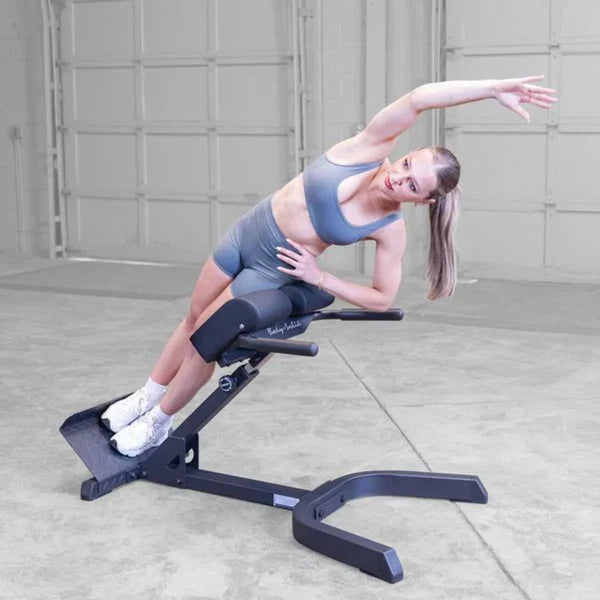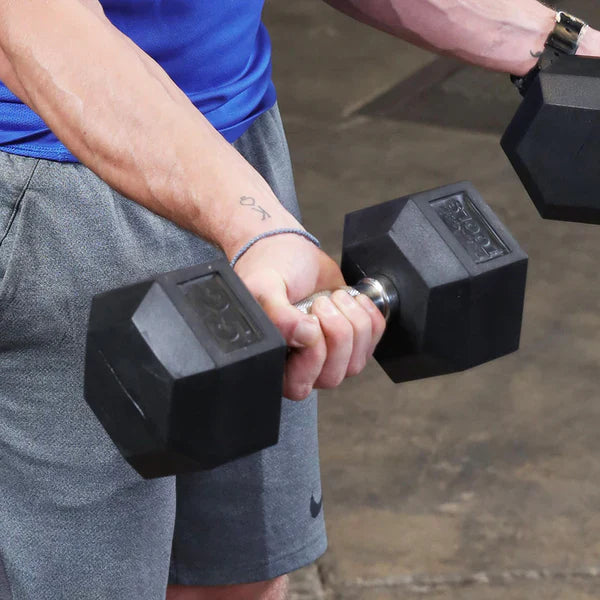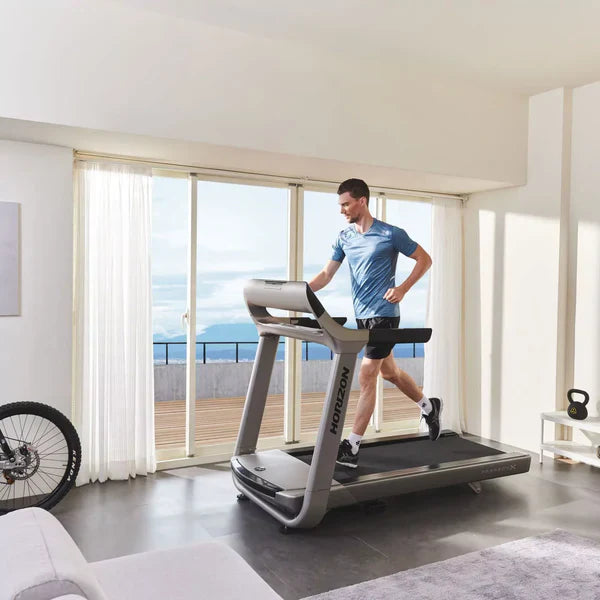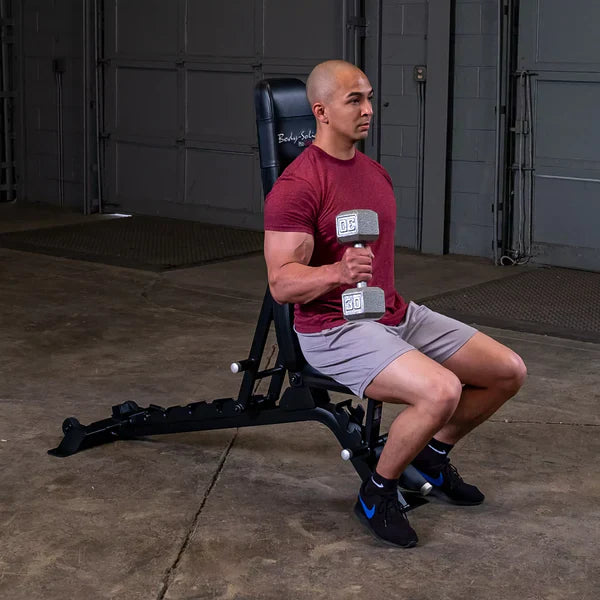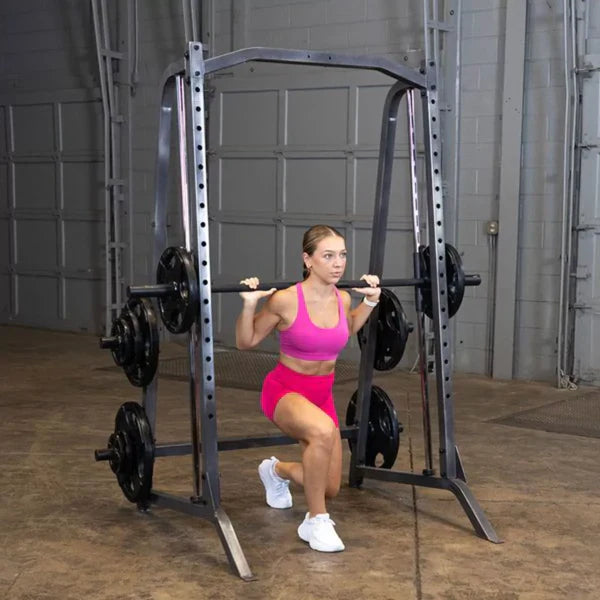When building a home gym, most people start with the basics: dumbbells, resistance bands, a yoga mat, and maybe a treadmill. But if you’re serious about creating a balanced fitness setup that supports strength, stability, and long-term spinal health, one piece of equipment stands out—the hyperextension bench.
Not only does it help develop core strength and improve posture, but it also addresses a muscle group often neglected in typical at-home training: the lower back. In this article, we’ll explore why adding a hyperextension bench could be a game-changer for your fitness journey, review the best hyperextension for home gym setups, and outline a hyperextension workout routine at home that maximizes results.
What is a Hyperextension Bench?
A hyperextension bench (sometimes called a Roman chair) is a piece of exercise equipment designed to target your posterior chain—specifically the lower back, glutes, hamstrings, and spinal erectors. It allows you to perform controlled back extensions (often referred to simply as “hyperextensions”) by hinging at the hips while keeping your spine aligned.
Unlike many machines that isolate one muscle group, a hyperextension bench encourages a functional movement pattern that mimics how we bend and straighten in daily life. This makes it an incredibly versatile and useful tool in any home gym setup.
Hyperextension Benefits
Before you invest in a new piece of equipment, it’s important to know what you’re getting in return. Here are some of the top hyperextension benefits:
1. Strengthens the Lower Back
Weak lower back muscles are one of the leading contributors to poor posture and back pain. Hyperextensions directly target the spinal erectors, improving strength and endurance in the lower back.
2. Improves Posture and Core Stability
Spending hours sitting at a desk often leads to rounded shoulders and a weak core. Hyperextensions counteract these issues by engaging the entire posterior chain and reinforcing proper spinal alignment.
3. Activates Glutes and Hamstrings
While many people associate hyperextensions with back exercises, they’re also an excellent way to fire up the glutes and hamstrings. By adjusting your form, you can shift emphasis toward the hips, making it a great accessory movement for lower-body strength.
4. Injury Prevention
A strong posterior chain helps protect the spine during heavy lifts like squats and deadlifts. Regular use of a hyperextension bench can reduce the risk of lower back strains and enhance overall resilience.
5. Low-Impact Yet Effective
Unlike high-impact exercises that stress the joints, hyperextensions provide a controlled movement that builds strength without excessive wear and tear. This makes it suitable for beginners, athletes, and even those in rehabilitation (with proper medical guidance).
Choosing the Best Hyperextension for Home Gym
If you’re ready to add a hyperextension bench to your space, you’ll want to choose a model that balances quality, comfort, and functionality. Here’s what to consider:
1. Adjustable Angle and Height
Look for a bench that allows you to adjust the height of the pads to accommodate your body size. Some models also let you adjust the angle of the bench, providing options for progressive overload.
2. Sturdy Frame and Compact Design
Since this is going in your home gym, durability and footprint matter. A foldable or compact hyperextension bench is ideal for smaller spaces, while heavy-duty frames are best for serious lifters.
3. Comfort and Padding
Thick, ergonomic pads can make a big difference in comfort, especially during longer workout sessions.
4. Versatility
Some hyperextension benches double as ab trainers or can be adjusted for decline sit-ups, giving you more bang for your buck.
Recommended Options
-
Budget-Friendly Choice: A foldable Roman chair with adjustable height.
-
Mid-Range Pick: A sturdy 45-degree hyperextension bench with non-slip foot pads.
-
Premium Option: A commercial-grade bench with multiple angles, designed for serious strength training.
Each of these options can qualify as the best hyperextension for home gym, depending on your budget and training goals.
Hyperextension Workout Routine at Home
Now that you know the benefits and how to choose the right equipment, let’s outline a practical hyperextension workout routine at home. This can be done on its own or added to your existing strength program.
Beginner Routine (2–3 times per week)
-
Bodyweight Back Extensions – 3 sets of 12–15 reps
-
Glute-Focused Extensions (squeeze at the top) – 3 sets of 10–12 reps
-
Plank Holds – 3 sets of 30–45 seconds
Intermediate Routine
-
Weighted Back Extensions (hold a dumbbell or plate) – 4 sets of 8–12 reps
-
Single-Leg Hyperextensions – 3 sets of 10 per leg
-
Side Plank with Hip Lift – 3 sets of 12 each side
Advanced Routine
-
Barbell or Resistance Band Hyperextensions – 4 sets of 6–10 reps
-
Explosive Hyperextensions (controlled up, fast squeeze) – 3 sets of 12 reps
-
Hyperextension Holds (isometric) – 3 sets of 20–30 seconds
Tips for Safe and Effective Hyperextensions
-
Keep your spine neutral. Avoid arching your lower back too much. The movement should come from the hips, not the spine.
-
Control the range of motion. Don’t swing your torso—slow, controlled reps are more effective.
-
Progress gradually. Start with bodyweight before adding weights.
-
Engage your core. Brace your abs throughout the movement to protect your spine.
Why Hyperextensions Are Perfect for a Home Gym
Most home gyms focus heavily on pressing and pulling movements like push-ups, pull-ups, or dumbbell curls. But the posterior chain—the backside of your body—is often neglected. This imbalance can lead to poor posture, reduced strength potential, and even back pain.
A hyperextension bench fills that gap by:
-
Targeting muscles rarely hit in bodyweight-only training.
-
Offering a safe, low-impact exercise option.
-
Being compact and affordable compared to larger machines.
In other words, if you’re building a home gym for long-term health, performance, and balance, a hyperextension bench is one of the smartest investments you can make.
Final Thoughts
The hyperextension bench is more than just a niche piece of equipment—it’s a powerful tool for building strength, improving posture, and preventing injury. Whether you’re new to fitness or an experienced lifter, incorporating hyperextensions into your training routine can deliver lasting benefits.
When shopping for the best hyperextension for home gym, look for durability, adjustability, and comfort to ensure you’ll actually use it consistently. And once you have it, follow a structured hyperextension workout routine at home to maximize results.
Investing in a hyperextension bench today could mean fewer back problems, stronger lifts, and a healthier spine tomorrow. It’s one of those rare pieces of equipment that pays dividends well beyond the workout itself.

